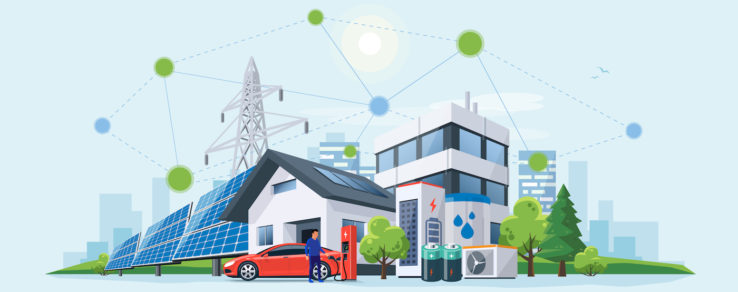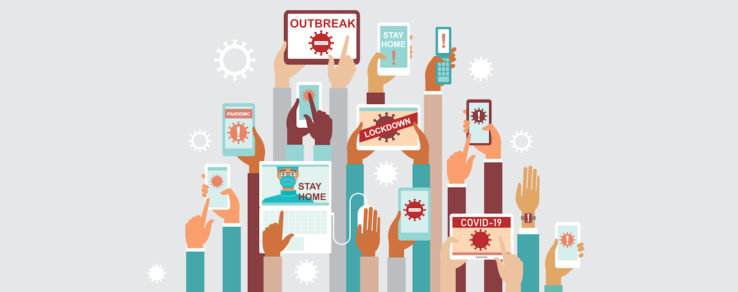Concerns about racial justice, diversity and inclusion have taken on renewed importance this year with a national dialogue that was long overdue. For energy utilities this issue is critical, not just as large employers, but as institutions in your communities and in the way you serve and represent your customers.
In Questline Digital’s Plugged In webinar, “Diversity & Inclusion: Strategies for Energy Utilities,” industry experts from the Smart Energy Consumer Collaborative, Heidrick & Struggles and Duquesne Light Company shared their insights and tactics for creating a more inclusive energy utility workplace and community.
Improving workplace diversity and inclusion at energy utilities
Patty Durand, president and CEO of SECC, started the webinar by discussing ways that energy utilities and clean tech companies can increase diversity within their workforces. She emphasized that the energy efficiency sector is the largest employer in the clean energy economy. However, not everyone is benefiting from this economic powerhouse.
For example, Hispanic, Black and women employees represent a smaller share of the energy efficiency workforce than the national workforce. That’s why it’s vital to expand energy efficiency job opportunities to low-income or marginalized communities.
Durand shared the results of a recent ACEEE report highlighting exemplary programs operated by utilities, state agencies and community-based organizations to increase diversity and inclusion. To engage underrepresented workers, ACEEE identified the following strategies:
- Engage people from underrepresented groups with training and internship programs. To increase the pipeline of workers from underrepresented groups, stakeholders can offer training programs to contracting firms.
- Focus on supplier diversity and inclusive procurement. Utilities can choose to work with minority, women, disabled and veteran-owned businesses to design, administer and implement their programs.
How diversity and inclusion can transform energy utilities
The world is changing fast, resulting in fundamental differences in today’s global markets and talent pools. Grappling with these changes, every company has their own unique diversity, equity and inclusion journey. Kay Fuhrman, partner and leader with Heidrick & Struggles, shared eye-opening statistics showcasing workforce inequalities and why companies need to take steps to improve diversity, equity and inclusion.
According to Heidrick & Struggles data, people of color will soon account for 120% of total net workforce growth, representing the largest share of U.S. workforce growth. But today, they only make up 13% of U.S. and U.K. executive leadership. Similar inequalities exist for women who make up 80% of all consumer purchasing decisions, but only make up 25% of C-level executives at the top 1,000 U.S. companies.
Fuhrman shared that companies who make diversity a core part of their culture experience these benefits for inclusion:
- 17% increase in team performance
- 20% increase in decision-making quality
- Two times more likely to meet or exceed organizational targets
- Six times more likely to be innovative and agile as an organization
All organizations are located on a continuum of diversity and inclusion, Fuhrman explained. Over the past three to five years, the majority of companies fall between “supportive” and “engaged.”
Supportive companies are focused on recruiting and hiring from underrepresented groups. With engaged companies, the concept of DE&I is embedded in their core values. At the top of the continuum are companies that are considered change agents. These leaders in DE&I have a deep understanding of what it takes to make change happen and leverage diversity.
To help energy utilities start making positive change in their workforces and culture, Fuhrman shared the ABCs of key diversity best practices:
- Accelerate DE&I impact and results by aligning and preparing leaders
- Build visual representation by attracting external talent
- Create an inclusive culture with leadership advocacy
A commitment to being a DE&I change agent
For energy utilities, the workplace should reflect the communities they serve. Sarah Oliver Carter, Chief Diversity Officer at Duquesne Light Company, shared how a focus on diversity, equity and inclusion is the foundation of the Pittsburgh-based energy utility’s workplace and mission.
To deliver on a commitment to attract and retain highly skilled talent from underrepresented communities, this year Duquesne Light Company launched a full DE&I strategy that will span the next three to five years. The utility also created a supplier diversity program to support local minority-owned businesses.
According to Carter, a commitment to DE&I started with leadership and cascaded down to other parts of the organization. The first step was aligning diversity, equity and inclusion with company strategy, then inviting employees to get involved and determine what equity means to them. The utility’s DE&I guiding principles were broken down to five main pillars:
- Workforce Talent: Identify as an employer of choice. Attract, develop, retain and mentor a workforce that is reflective of the communities we serve. Enhance our employer brand to ensure that DLC is recognized as a trusted and inclusive organization.
- Workforce Culture: Lead in driving and sustaining “Culture Growth.”Cultivate an environment of workplace inclusion where voices are heard, respected, valued and engaged, resulting in a workforce that sparks new and bright ideas for business success.
- Customer: Support procurement in efforts to mainstream supplier diversity.
- Community: Strive for excellence in customer service. Support and suggest innovative customer and business solutions through alignment with company strategy and framework.
- Supplier Diversity: Lead in community impact by focusing on sustainable workforce initiatives and investing locally in the success of diverse small businesses.
As these insights illustrate, a commitment to diversity, equity and inclusion needs to be an ongoing effort. Equipped with this knowledge, your energy utility can take steps to create opportunities for underrepresented populations — and create positive change in your workplace and community.




